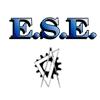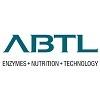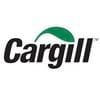Check out what is new in Animal Feed
Find the best technical articles, forums, and videos on Animal Feed at Engormix. Enter now and interact with the world's largest agricultural social network.
.jpg&w=3840&q=75)
John Boney (Penn State University) discusses performance, body weight, and feed conversion ratio when feeding mash compared to pellets in this Engormix interview during IPPE 2025 in Atlanta, USA....
Comments : 3
Recommendations: 1
.jpg&w=3840&q=75)
James Wen (Evonik Animal Nutrition) explains how NIR calibration helps address feed ingredient variability by measuring factors like trypsin inhibitors and reactive lysine, ensuring consistent quality and nutrient balance for optimal animal performance.
...
Comments : 3
Recommendations: 2
Introduction Over the last two decades the U.S. fuel ethanol industry grew exponentially. Now, large quantities of ethanol coproducts, are commonly available as feedstuffs for livestock both in the USA and in international markets. As described elsewhere, ethanol coproducts are added to livestock diets (both ruminants and monogastrics) primarily as sources of protein and energy, but other nutrients also, including spent yeast cells. Energy is provided by fat, fermentable fiber, and...
Comments : 0
Recommendations: 1
.jpg&w=3840&q=75)
Lara Moody (IFEEDER) comments on the main issues and projects on IFEEDER's 2025 agenda in this Engormix interview during IPPE 2025 in Atlanta, USA....
Comments : 0
Recommendations: 0
.jpg&w=3840&q=75)
Lara Moody (IFEEDER) shares her insights regarding inclusion rates and circularity of ingredients in this Engormix interview during IPPE 2025 in Atlanta, USA....
Comments : 0
Recommendations: 0
.jpg&w=3840&q=75)
Roberta Simpson-Dolbeare (American Soybean Association) shares her family's farm history and expertise, as well as her insights on exporting soybeans, in this Engormix interview during IPPE 2025 in Atlanta, USA....
Comments : 0
Recommendations: 0
.jpg&w=3840&q=75)
Constance Cullman (AFIA) discusses feed ingredients regulations and food safety among AFIA's goals this year, in this Engormix interview during IPPE 2025 in Atlanta, USA....
Comments : 0
Recommendations: 0
.jpg&w=3840&q=75)
Jim Sutter (U.S. Soybean Export Council) talks about the benefits of US soybeans, understanding value, and offering choices, in this Engormix interview during IPPE 2025 in Atlanta, USA....
Comments : 0
Recommendations: 0
Increasing prices and low availability of common feed raw materials resulted in the use of alternative ingredients in animal production. These ingredients are often characterised by a high amount of soluble fibre resulting in lower performance and intestinal health issues that limits their inclusion rate in the diet. Bacillus amyloliquefaciens CECT 5940 (Ba) is a probiotic that can produce various metabolites and enzymes relieving the negative effects of soluble fiber and therefore it allows...
Comments : 2
Recommendations: 2
.jpg&w=3840&q=75)
Dr. S.K. Bhardwaj, delivers 30+ years of expertise in poultry nutrition and feed technology. Consulting across India, Bangladesh, and Nepal, he tackles challenges like climate, costs, and disease while exploring market trends and the future of India’s poultry sector....
Comments : 0
Recommendations: 0
Mycotoxin tests are tools, and like any tool, you need the one that fits your goals. Sometimes tests aim to be sensitive and compliant, others fast and simple. One common way to categorize types of mycotoxin tests is differentiating regular versus rapid testing. What Is a Regular Test? Regular tests are...
Comments : 0
Recommendations: 0
.jpg&w=3840&q=75)
Dr. S. Nandakumar, Formulator at Cargill India, specializes in custom shrimp and fish feed formulations. He shares insights on India's rapidly growing aquaculture sector, driven by innovation, government support, and rising consumer demand....
Comments : 2
Recommendations: 0
.jpg&w=3840&q=75)
Nakul Vakil, Managing Director at Cremach Private Limited, shares insights into India's rapidly growing animal feed industry and how strategic partnerships with global leaders like Mr. Josef Barbi from ESE & INTEC deliver top-quality, cost-effective feed plants across India and abroad. ...
Comments : 0
Recommendations: 0
.jpg&w=3840&q=75)
Dr. Saikat Saha - Regional Business Director Asia - Evonik, discusses how amino acid solutions help address raw material shortages and disease challenges in the poultry industry. He highlights the importance of balancing diets with amino acids and using NIR technology to optimize feed quality and costs...
Comments : 0
Recommendations: 3
The American Feed Industry Association’s (AFIA) free Feed Education Program will return to the 2025 International Production & Processing Expo , happening Jan. 28-30, in Atlanta, Ga. The AFIA Feed Education Program will be held on Jan. 29 from 8 – 10 a.m. ET in Room A412.
“We are excited to continue offering this free...
Comments : 0
Recommendations: 0
INTRODUCTION: The gastrointestinal tract, often referred to as "the gut," is a complex system consisting of several components, including the epithelium, the immune arm, and the commensal bacteria. This intricate structure plays a crucial role in the overall health and well-being of animals. Understanding the defense mechanisms of the gut is vital for maintaining optimal gastrointestinal function and preventing the invasion of harmful pathogens. (Kogut et al .,...
Comments : 0
Recommendations: 3

Phil Wellhausen (Applications Manager, CPM) explains picks replacement and temperature probe cleaning, during FIGAP 2024 in Mexico....
Comments : 0
Recommendations: 1
.jpg&w=3840&q=75)
Phil Wellhausen (Applications Manager, CPM) discusses steam headers and pressure-reducing valves, during FIGAP 2024 in Mexico....
Comments : 0
Recommendations: 0
Impact of Trace Mineral Status on Biological Function: The nutritional status of animals is an indicator of their productivity and reproductive capabilities. In tropical countries like India, mineral imbalances or deficiencies are prevalent . (Mc Dowell et a l., 1993) . Livestock in India typically rely on grazing and receive minimal or no mineral supplementation, apart from common salt. (Garg et al ., 2005) . Additionally, the mineral content of locally...
Comments : 0
Recommendations: 0




.jpg&w=3840&q=75)





.jpg&w=3840&q=75)
















.jpg&w=3840&q=75)


